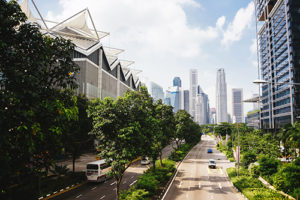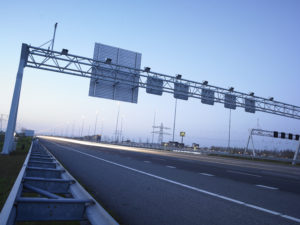Start-up methods – the way to go sustainable
Start-up methods for sustainable cities
We are starting to get a grip on what makes a city sustainable and livable. It is a city with less traffic, great public transportation and bike lanes. It has streets and open spaces where people can walk, exercise, meet, socialize and transact. The sustainable city is attractive and has a great sense of a place. Those are the characteristics of a sustainable city. It is the ultimate goal, the vision.
Is there a blueprint of how to achieve sustainability in a city? The reality is that all cities are different, and therefore there is not one generic plan that can be applied to all. Especially when it comes to the traffic environment. However there are generic methods that can help you get there. Gabe Klein, entreprenuer and city planner, has successfully used an entrepreneurial start-up method to convert both Washington DC and Chicago towards sustainability. This blog is inspired by his work as well as the work by Eric Ries on Lean Start-ups.
Lean start-up and city development
The lean start-up is primarily developed for software based business but the method can be tailored to other areas. It is a scientific method of managing a start-up where the elimination of uncertainty is key to success. The method also has the benefit of an affordable loss, tracking learning progress and an approach to accelerate growth. This makes the method ideal to applied in city sustainability development by experimenting.

The lean start-up principles
The lean start-up principles and their potential for city development:
- Entrepreneurs are everywhere – entrepreneurs also work in government
- Entrepreneurship is management – entrepreneurship is not a mysterious art but systemic management
- Validated learning – learning and adapting through scientific testing
- Innovation accounting – setting milestones and measuring progress by using SMART goals.
- Build-measure-learn – going from idea to experiment, measuring inhabitants reactions and feedback.
Learn more about the Lean start-up method at http://theleanstartup.com/#principles.
Lessons from Washington DC and Chicago
Gabe Klein has reshaped both Washington DC and Chicago using start-up methods. He shares eight lessons for city planners in his book Start-Up City:
- Don’t be afraid to screw up and learn. Make mistakes, make them quick and learn from them.
- Manage SMART – Specific, Measureable, Agreed upon, Realistic and Time-based – Empowering your team.
- Where there’s a will, there’s a way – Evaluate your budget quickly, asses and align your stakeholders.
- Sell your city – Marketing, communication with the public and celebration of accomplishments.
- Fund creatively – How to find funding, and make the most out of a slim budget.
- Bridge the public-private divide – When government engage with the private sector it can ensure equity while developing new solutions. Solutions that are being implemented by the private sector for the greater good of the city.
- Prepare for disruption – Technology shifts and business models transforming the urban life.
- Drive change – Make sure to drive change instead of reacting to changes.
The first lesson, to not be afraid to screw up and learn, is essential when experimenting in the city. Since the city government often is in the public spotlight, this point needs special attention. Otherwise politics can ruin the long term plan due to one failed experiment, regardless of the quality of the lessons learned from it.

Changing vehicle traffic in the city
Vehicle traffic is a major obstacle to overcome in order to achieve sustainability in a city. Hence, vehicle traffic needs to be addressed and the start-up methods are ideal for this purpose. There are so many measures that potentially improve the city, as exemplified in previous blog posts. However it is very hard to assess the impact in advance. Therefore, experimenting and using scientific methods of measuring the impact, is a the right way to manage the process and get things done. Doing it the start-up way means to be braver, faster to go to experiment and learn faster, than traditional traffic planning methods. Consequently, courageous but systematic experimenting will result in faster achievements and a faster changing city.
Build-measure-learn on macro level
As stated above it is vital to measure the effects, when executing experiments in traffic; to measure and learn. It is useful to use macro level tools such as traffic planning, traffic management and traffic simulation software. These tools help planning and simulating, as well as measure high level effects of the experiments. The tools are normally using traffic data available from TomTom, Here and/or Inrix. Hence the results are directly available without delays. The disadvantage being that most of the data sources only provide vehicle traffic and are on an aggregated level. Furthermore the data are not 100% accurate but are sufficient to establish effects.
Build-measure-learn on micro level
Tools available on micro level include:
- Radar or laser sensors to measure traffic at certain points. These sensors generally provide accurate data at a location for motor vehicles including speed profiles and traffic volume as well as classification of vehicles.
- Video cameras with vehicle detection software. Video is an inexpensive sensor to get fairly accurate traffic data at a location. However the accuracy of video based vehicle detection depends on lighting conditions. Under controlled lighting conditions video detection can be used to measure also different kinds of traffic, vehicles, bikes and pedestrian traffic. However, in varying light conditions the accuracy falls sharply.
- ANPR-cameras (Automatic Number Plate Reading) can measure vehicle traffic very accurately at a location, and it can also distinguish between different classes of vehicles if a national vehicle database is available to download.
- 3D video analytics that can provide detailed behavioral analysis of vehicle traffic, bikes and pedestrian traffic. Vehicles can also be broken down into cars and large vehicles, i.e. trucks and buses. Even conflict behavior between the different transportation modes can be analyzed. The 3D video analytics system covers a limited area. However, it provides micro level details on when planning to apply new traffic measures.

Combining a macro level tool such as a traffic planning and simulation software that is using data from available sources, with a micro level tools such as a 3D video analytics tool will provide sufficient data to learn from experiments in the traffic environment. Traditionally traffic engineers have had to rely on students in street corners counting cars, a slow and ineffective method.
Summary: Start-up methods get your city sustainable quicker
The lean start-up framework provides a technique to make a city sustainable faster through systemic experimenting and learning by doing. The method requires courage and awareness that failures will occur. Measuring impact needs some special attention when using the start-up method in a traffic environment. The best results will probably be gained by a combining macro and micro level tools to measure impact. Use macro level tools for planning and simulating experiments as well as measure their effects on a higher level. Use micro level tools, such as 3D video analytics to understand the detailed impact of the experiments, also on pedestrians and bicyclists.
Sources
The Lean Start-up by Eric Ries, http://theleanstartup.com/#
Start-up City by Gabe Klein, http://www.gabeklein.com/.
